Pão de Queijo Recipe
Pão de Queijo Recipe: Brazilian Cheese Bread. There are few things more comforting to me than a warm, chewy pão de queijo fresh from the oven. Growing up in Brazil, these cheesy rolls were a staple and could be found anywhere — from gas stations to bakeries to my family’s kitchen table. Now, living far from home, I make them often as a way to bring a little piece of Brazil into my everyday life. Whether it’s breakfast with coffee, a cozy afternoon snack, or something to share with friends, this pão de queijo recipe always delivers that nostalgic, soul-hugging feeling.

Pão de queijo traces its roots to the 18th century in Minas Gerais, Brazil, during the country’s colonial period. In the kitchens of wealthy landowners, enslaved Africans began preparing doughs using polvilho—a naturally gluten-free starch made from cassava, or manioc. With fresh cheese in short supply, they turned to aged, hardened cheeses, grating them into the dough along with eggs, milk, and fat (typically lard at the time, though oil is more common today). The result was a bread unlike any other: crisp on the outside, soft and chewy inside—a simple, resourceful creation that grew into one of Brazil’s most beloved national staples.
These naturally gluten-free cheese breads are made with tapioca flour (polvilho), eggs, oil, milk, and plenty of cheese. The dough comes together in one bowl and can be baked right away or frozen for later — which is perfect for those spontaneous snack cravings.
This post may contain affiliate links. I earn a commission from qualified purchases. Please read our Privacy policy here.
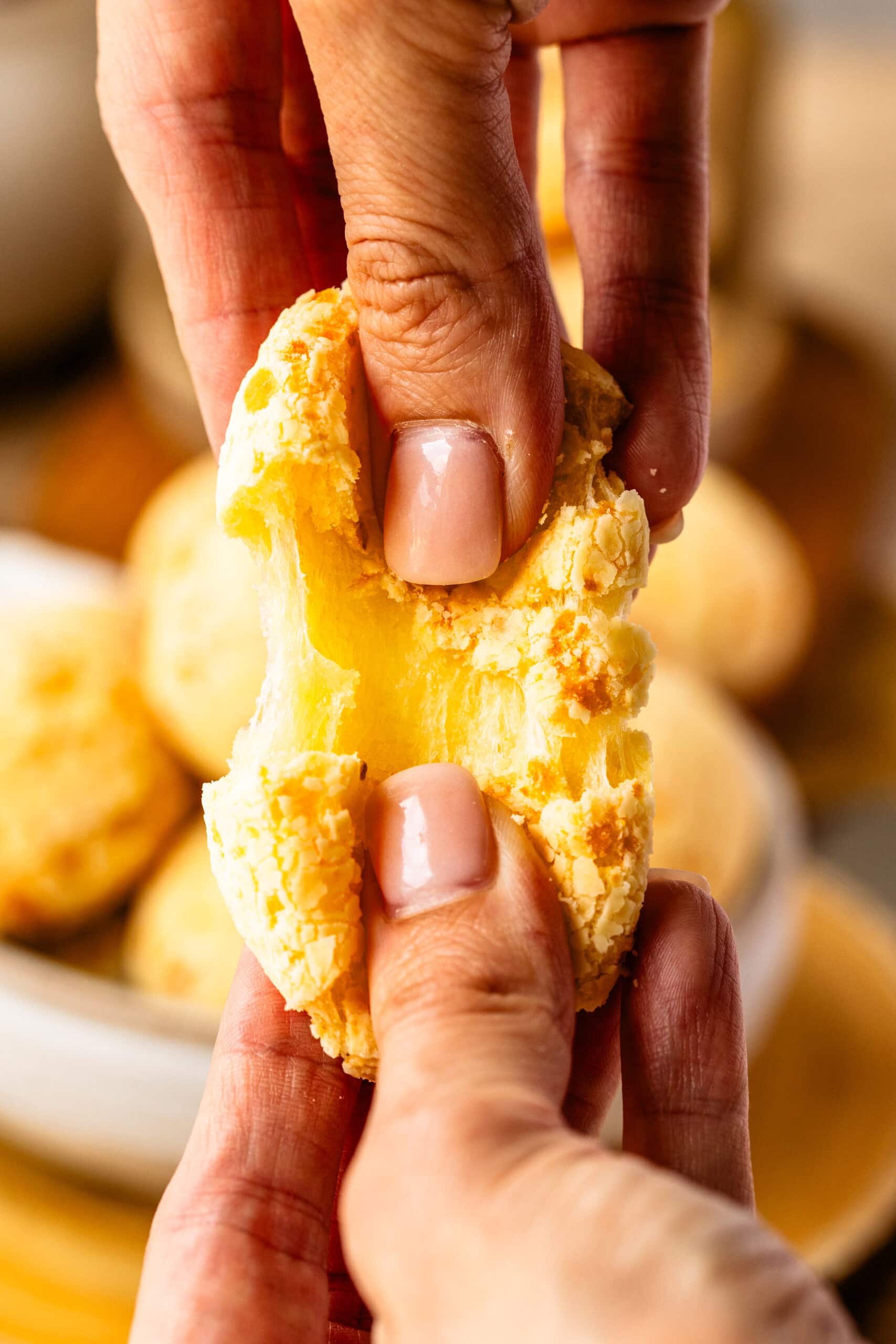
The Best Pão de Queijo Recipe
This is my go-to pão de queijo recipe — soft and stretchy on the inside, crisp and golden on the outside, and loaded with cheesy flavor. Full ingredients, baking time, and step by step instructions can be found in the recipe card at the bottom of this post!
What is pão de queijo made of?
At it’s core this deliocious Brazilian snack is made of:
- Polvilho (tapioca starch) – either polvilho doce (sweet) or polvilho azedo (sour), or a mix of both
- Eggs
- Milk
- Oil
- Cheese
- Salt
That’s it. No wheat flour, no yeast. The dough is naturally gluten-free and gets its structure from the gelatinized tapioca starch and the eggs.
You can absolutely use tapioca flour (which you’ll find at most U.S. grocery stores) in place of Brazilian polvilho — I do it all the time, and it works beautifully. That said, if you’ve ever had pão de queijo in Brazil, you might notice a subtle difference. My favorite version uses a 50/50 blend of polvilho doce (sweet) and polvilho azedo (sour). The azedo brings that signature puff and a touch of tang, while the doce adds softness. If you’ve never had the original, you likely won’t miss a thing — but if you can get your hands on both, it’s worth trying the mix.
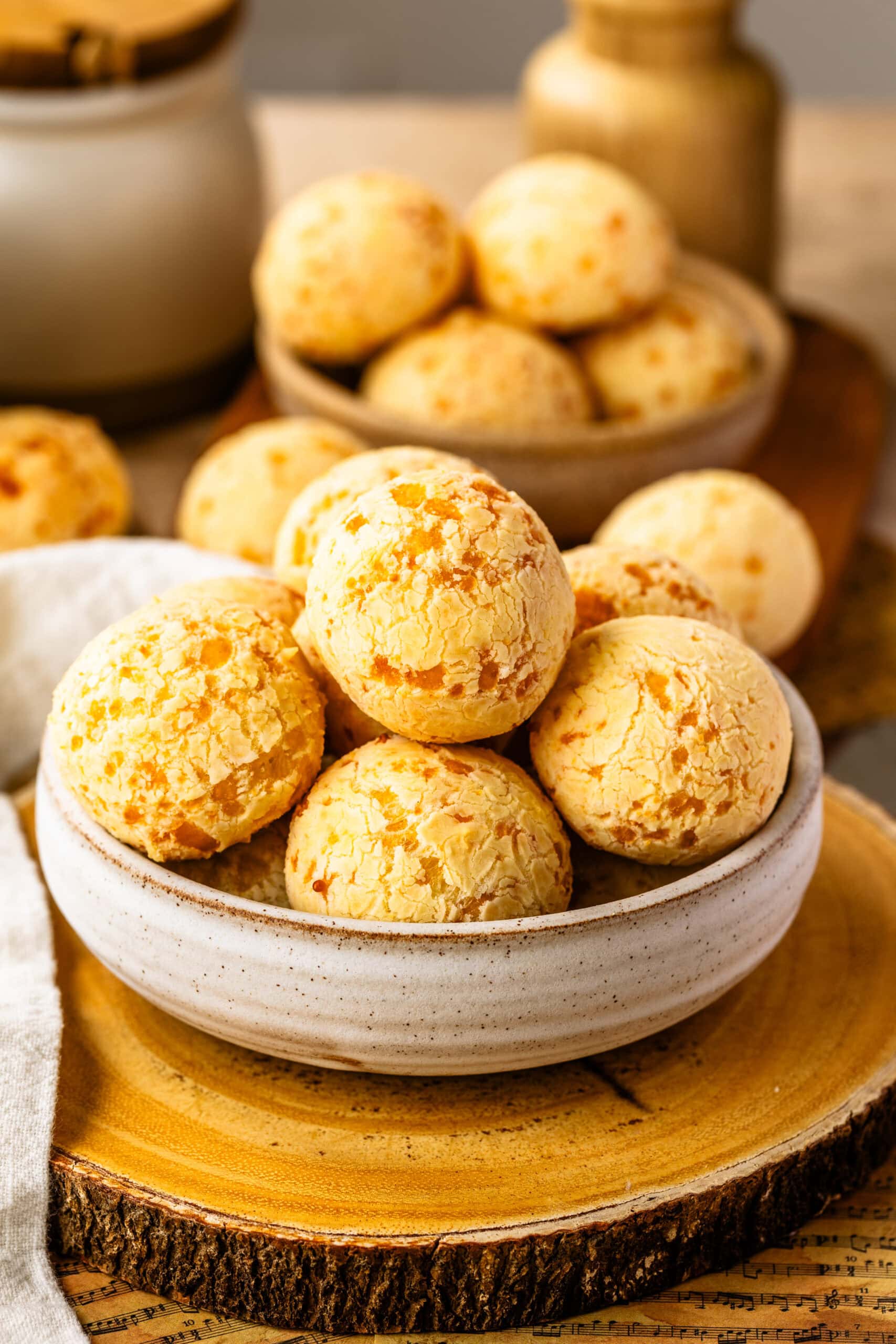
Cheese Matters
Traditional recipes call for queijo meia cura, a semi-aged Brazilian cheese that’s hard to find outside the country. Over the years, I’ve experimented with dozens of cheeses here in the U.S., and my favorite combo is cotija and parmesan. Cotija mimics the salty, crumbly texture of meia cura, and parmesan brings sharpness.
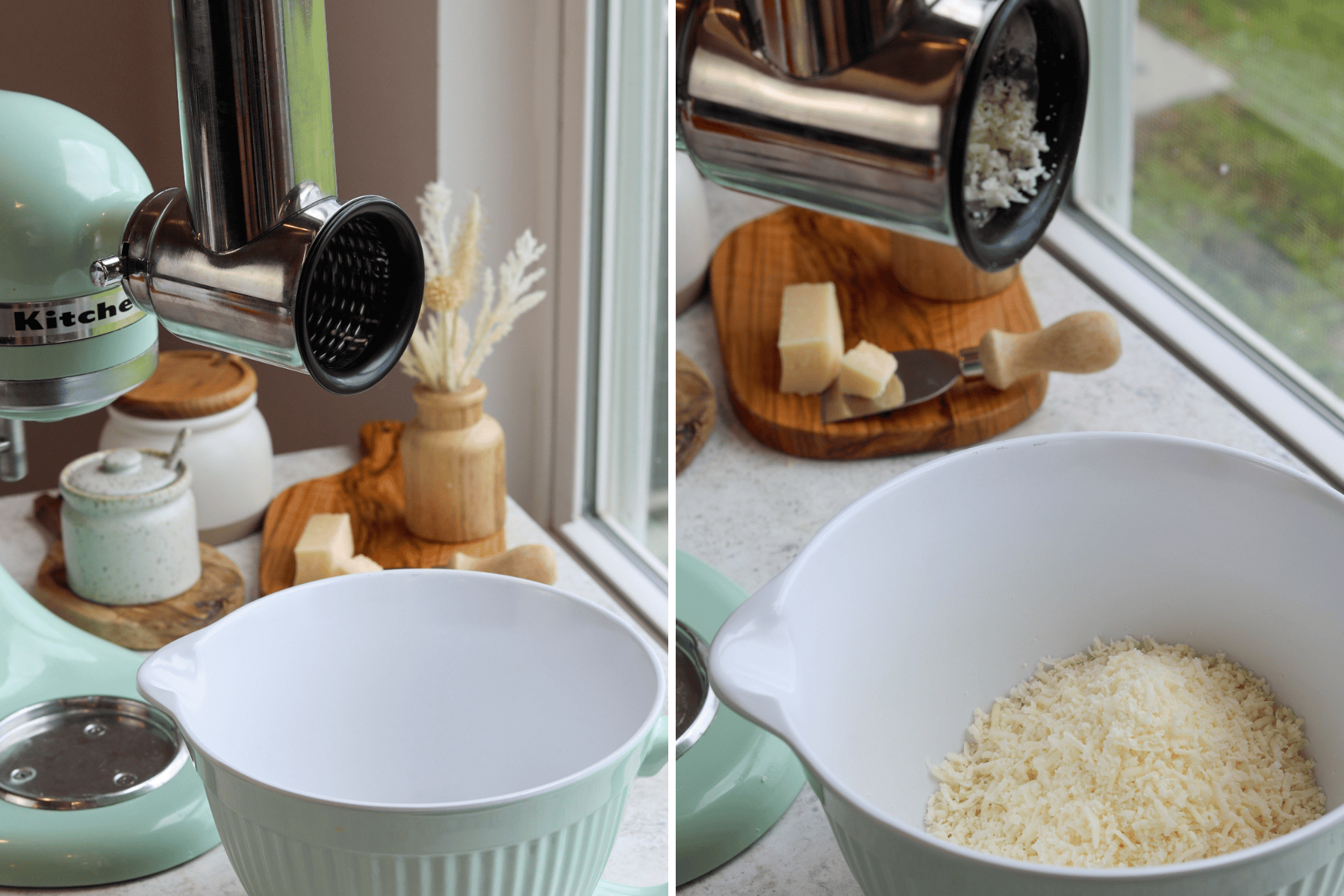
Let’s get started!
Make the Pão de Queijo Dough
Start by heating milk, vegetable oil, and salt together in a saucepan until just simmering.
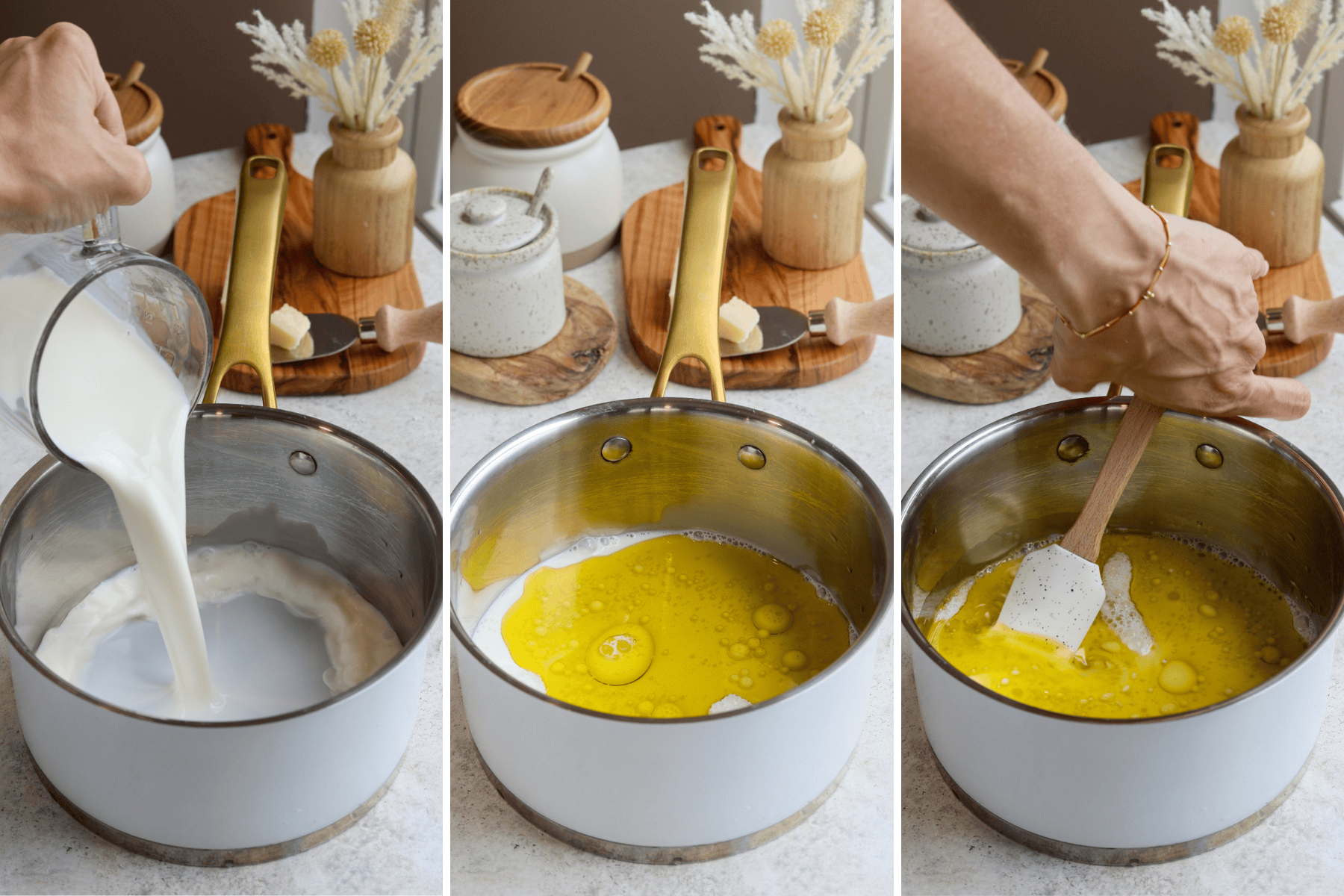
Pour this hot liquid over the tapioca flour to gelatinize it. This step gives pão de queijo its unique chewy structure. Once it cools slightly, you’ll mix in the eggs one at a time, then stir in the cheeses. The dough will be sticky and elastic. If it feels too soft to shape, a quick chill in the fridge helps it firm up.
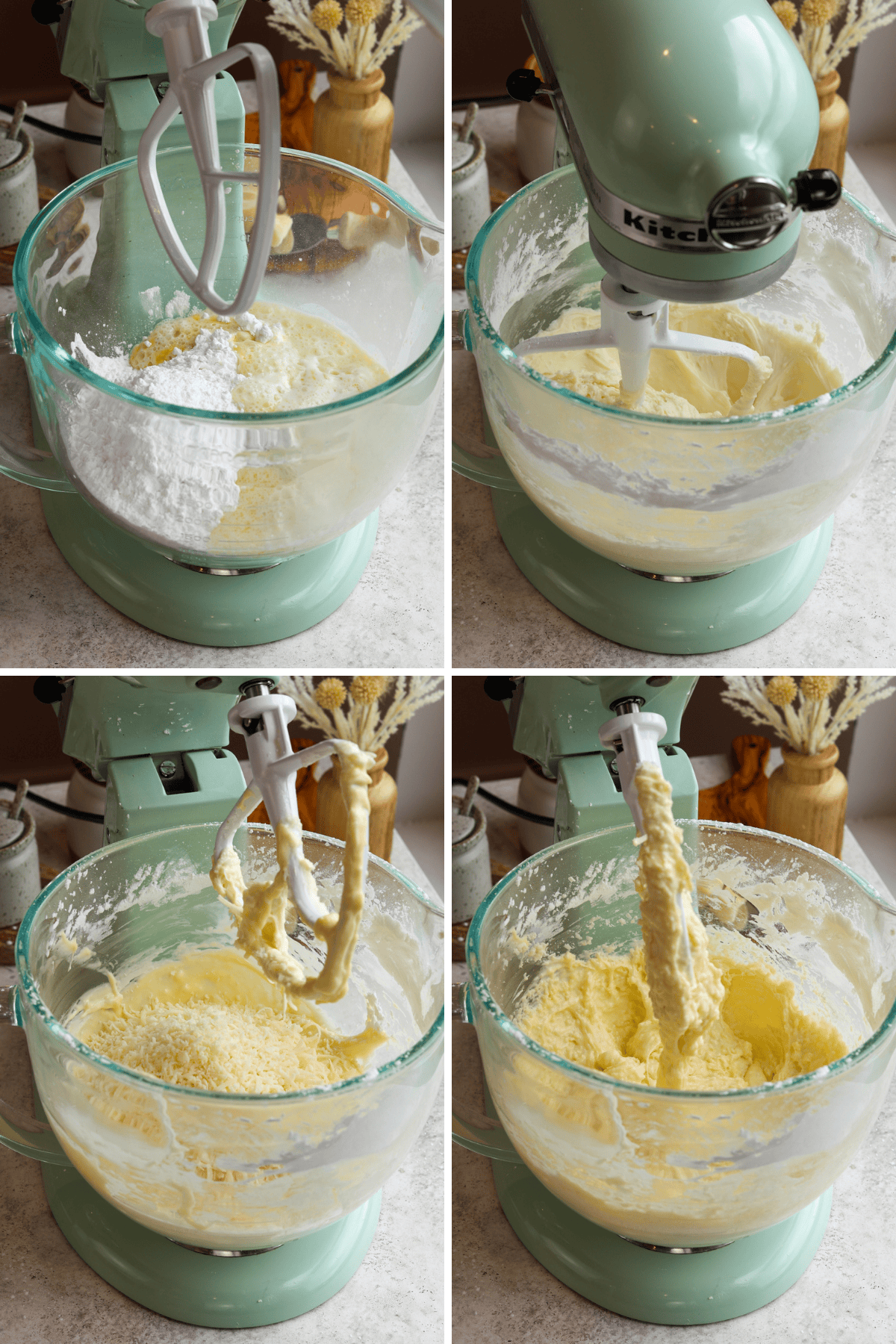
Shaping and Baking
Scoop and roll the dough into small balls (about the size of a golf ball) and place them a couple of inches apart on lined baking sheets. Bake at 375°F until puffed and lightly golden, about 20–25 minutes. Pão de queijo is best enjoyed warm from the oven, when the centers are still soft and cheesy and that chewy texture is just perfect.
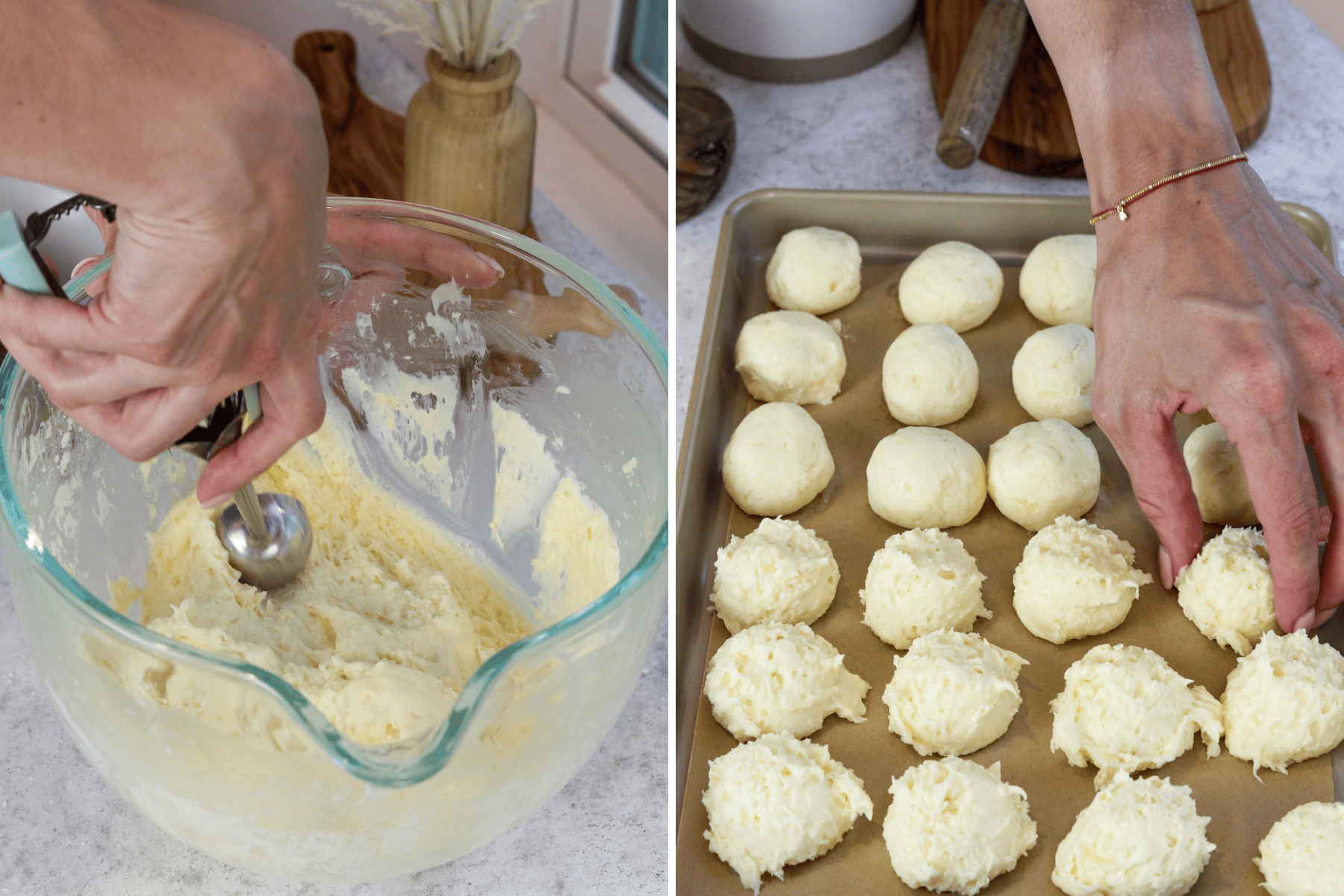
Storage
To freeze unbaked: Shape the dough into balls and freeze on a baking sheet. Once frozen, transfer to a freezer bag. Bake directly from frozen, adding 5 extra minutes to the bake time.
To freeze baked: Let cool completely and store in an airtight container or bag. Reheat in a 350°F oven for 5–8 minutes until warm and crisp. Though pão de queijo is best when it’s fresh.
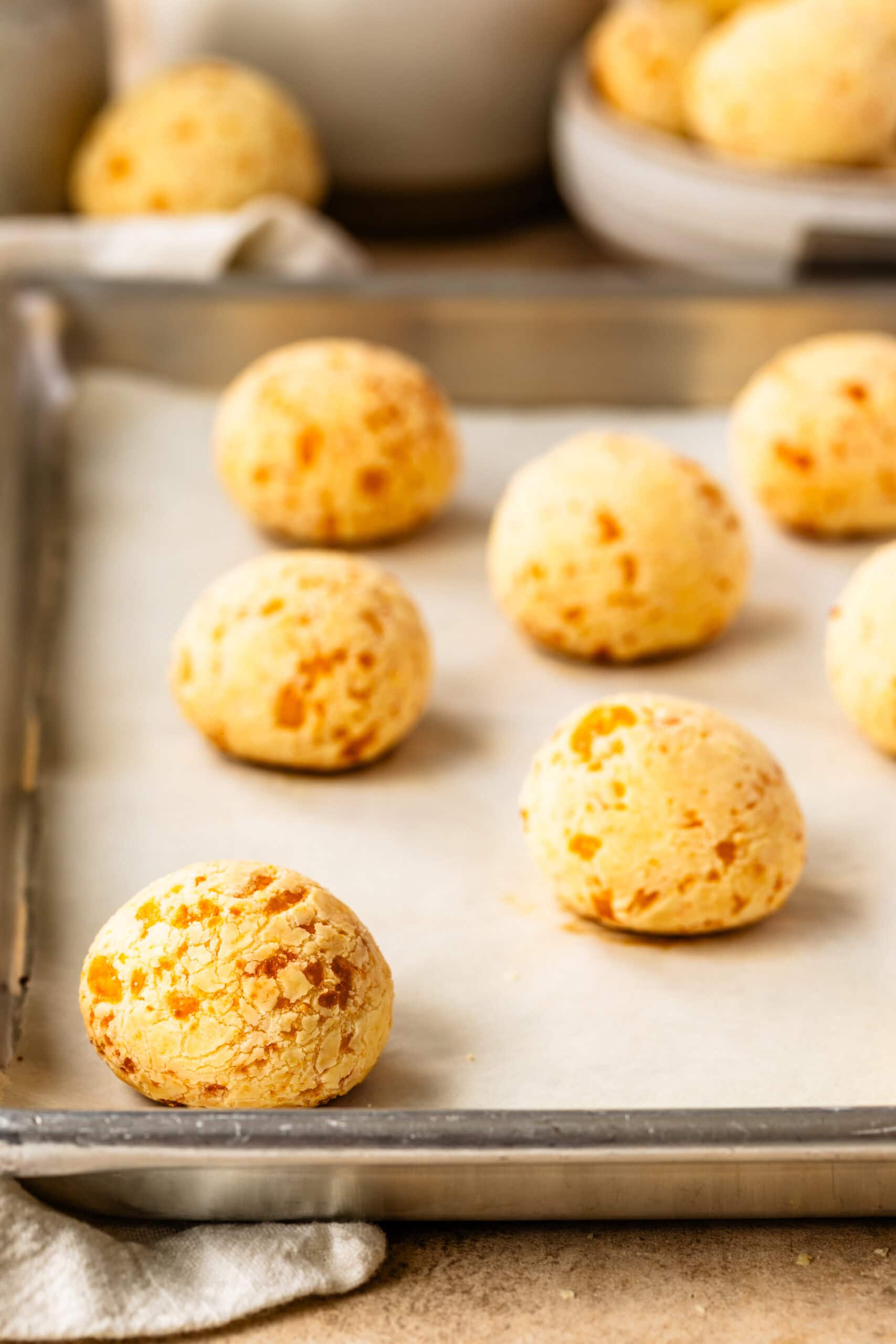
Tips & Tricks for this Pão de Queijo Recipe
- Use a combination of polvilho doce and polvilho azedo if available — it gives the best texture and flavor.
- Avoid olive oil. It makes the dough runny. Stick with neutral vegetable oil.
- If the dough is too wet to roll, chill it for 30 minutes.
- Don’t overbake — they should be lightly golden but not dry or hard.
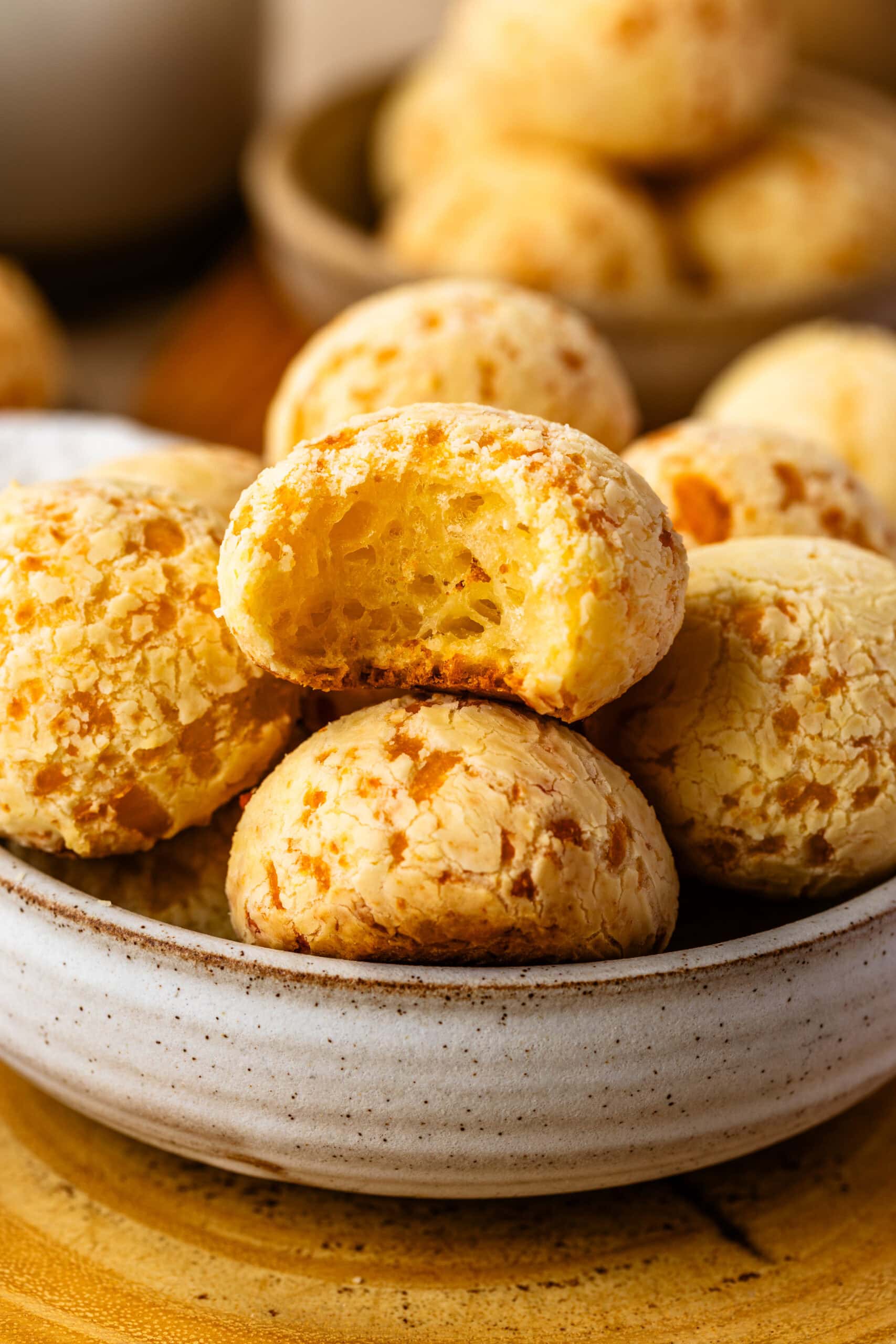
Variations
- Try mozzarella and provolone for a mild, melty version.
- Use cheddar sparingly for a richer flavor — too much makes the centers gummy.
- Add herbs like oregano or thyme for an extra savory touch.
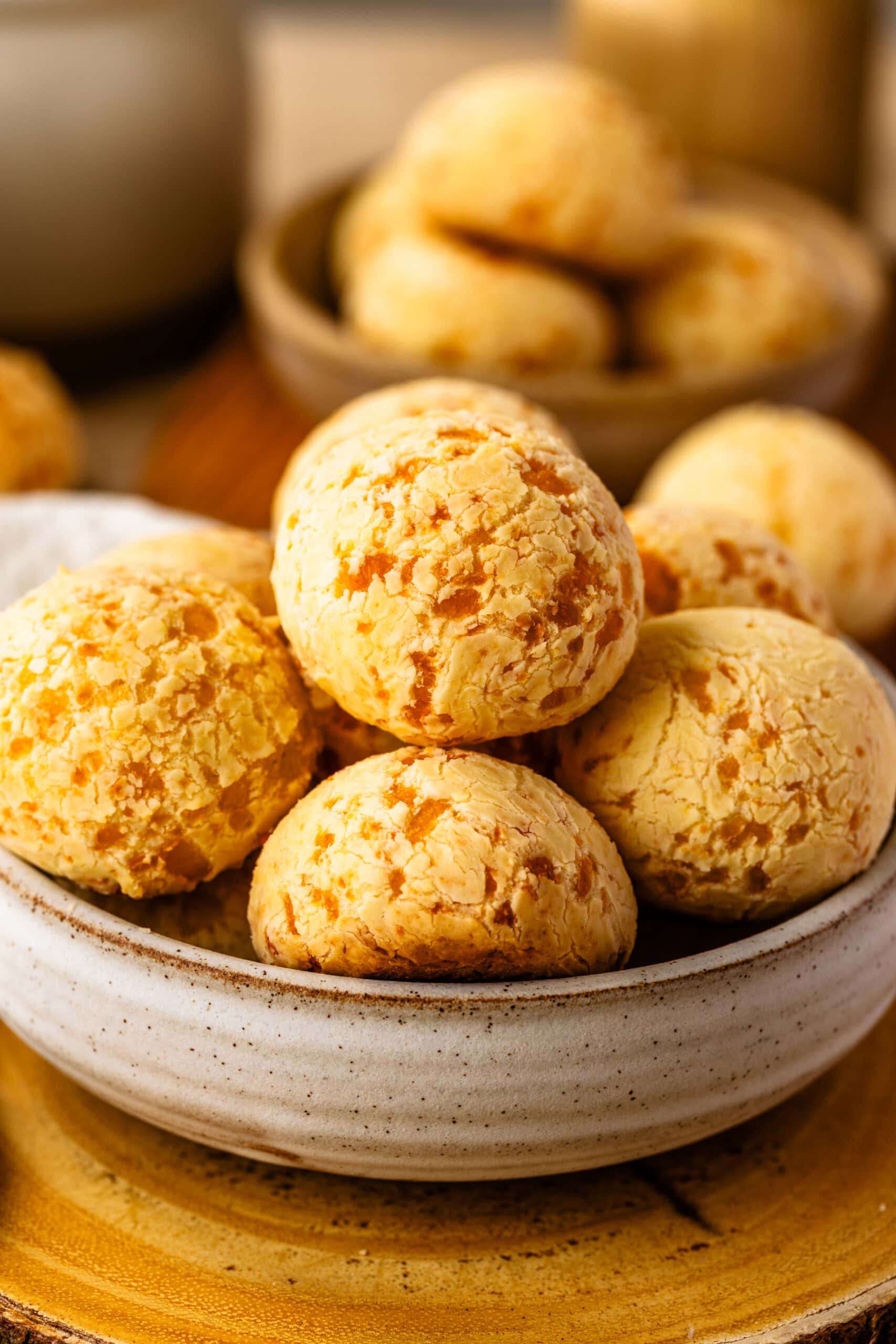
Pão de Queijo – FAQ
1. What makes this pão de queijo naturally gluten-free?
The recipe relies solely on tapioca starch (polvilho), which is derived from cassava and contains no wheat or gluten. This ingredient—combined with eggs—provides the unique chewy structure traditionally found in pão de queijo.
2. What types of tapioca starch (polvilho) should I use for the best results?
You can use regular tapioca flour/starch available in U.S. stores, but using a 50/50 blend of polvilho doce (sweet) and polvilho azedo (sour) gives the ideal texture. The sour variety adds signature puff and tang, while sweet ensures softness.
3. What cheeses does the recipe recommend if I can’t find Brazilian queijo meia cura?
Queijo meia cura—a semi-aged Minas cheese—is traditional but hard to find outside Brazil. The recipe suggests a combination of cotija (for salt and texture akin to meia cura) and parmesan (for sharpness), which works beautifully.
4. How do I handle sticky, hard-to-shape dough?
This dough is naturally stretchy and tacky. If it’s too soft to roll into balls, chill it in the fridge for 20–30 minutes—this will help firm it up so it’s easier to shape.
5. Can I freeze the dough or the baked cheese breads? What’s the best way to reheat them?
Absolutely! Here’s how to handle freezing and reheating:
- Unbaked dough balls: Arrange on a tray, freeze until firm, then store in a freezer bag. Bake directly from frozen, adding an extra 5 minutes to the baking time.
- Baked pães de queijo: Cool completely, store airtight or in a freezer-safe bag. To reheat, warm in a 350 °F (175 °C) oven for 5–8 minutes until warm and crisp.
Similar Recipes
If you love cheesy breads, try the below:
Can’t wait to see your pão de queijo! If you make it, tag me on Instagram @piesandtacos so I can drool over your cheesy creations.
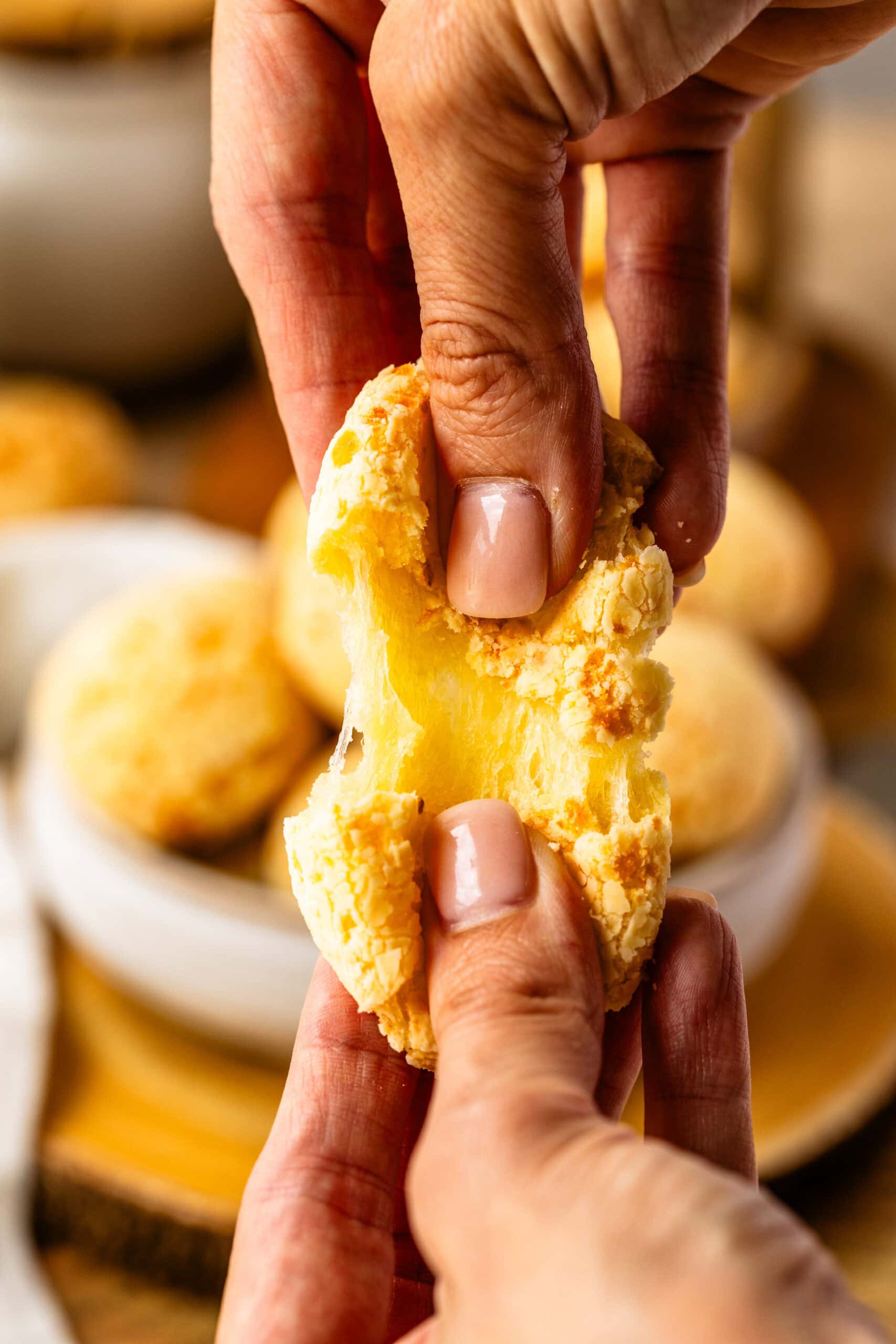
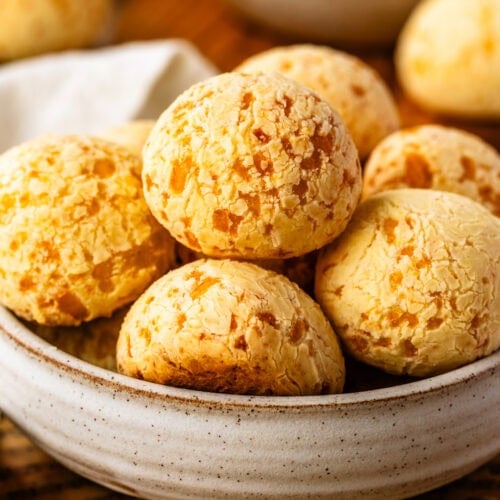
Pão de Queijo Recipe
Ingredients
- 4 cups tapioca flour 1 lb
- 1¼ cup milk
- ⅓ cup vegetable oil (DO NOT use olive oil)
- 2 tsp salt
- 2 eggs
- 1 cup cotija cheese or mozzarella
- 1 cup parmesan cheese
Instructions
- Preheat the oven to 375°F (190°C). Line two baking sheets with parchment paper or silicone mats.
- In a saucepan, combine the milk, oil, and salt. Heat over medium heat until the mixture just comes to a boil. Watch it closely. Once it starts bubbling, remove it immediately from the heat.
- Place the tapioca flour in a large mixing bowl, or in the bowl of a stand mixer. Pour the hot milk mixture over the flour. Stir with a sturdy wooden spoon or with the paddle attachment until the mixture is evenly combined. It will look sticky and clumpy, that’s normal.
- Allow the mixture to cool for about 5 minutes.
- Crack in the eggs, one at a time, mixing well after each addition. The dough will be sticky and stretchy. Then, add the cotija and parmesan cheeses. Mix until fully combined, you can use your hands to knead it together if needed.
- If the dough is too loose to roll, chill it for 20–30 minutes to firm up. If too dry, add a splash more milk.
- Scoop about 1½ tablespoons of dough and roll into balls (about golf-ball size). Arrange them on the baking sheets, spacing a couple of inches apart.
- Bake for 20–25 minutes, or until the pão de queijos are puffed and golden.
- Pão de queijo is best enjoyed fresh out of the oven.
- Leftovers can be reheated in a toaster oven or frozen after baking.


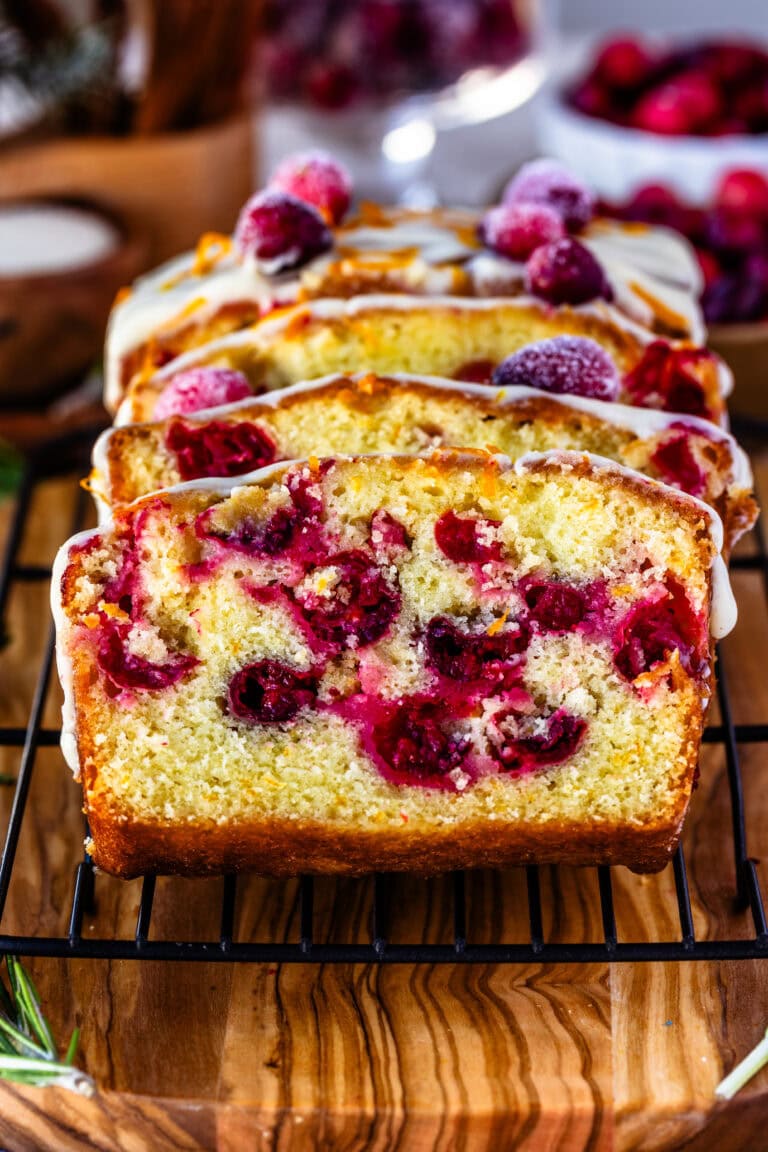
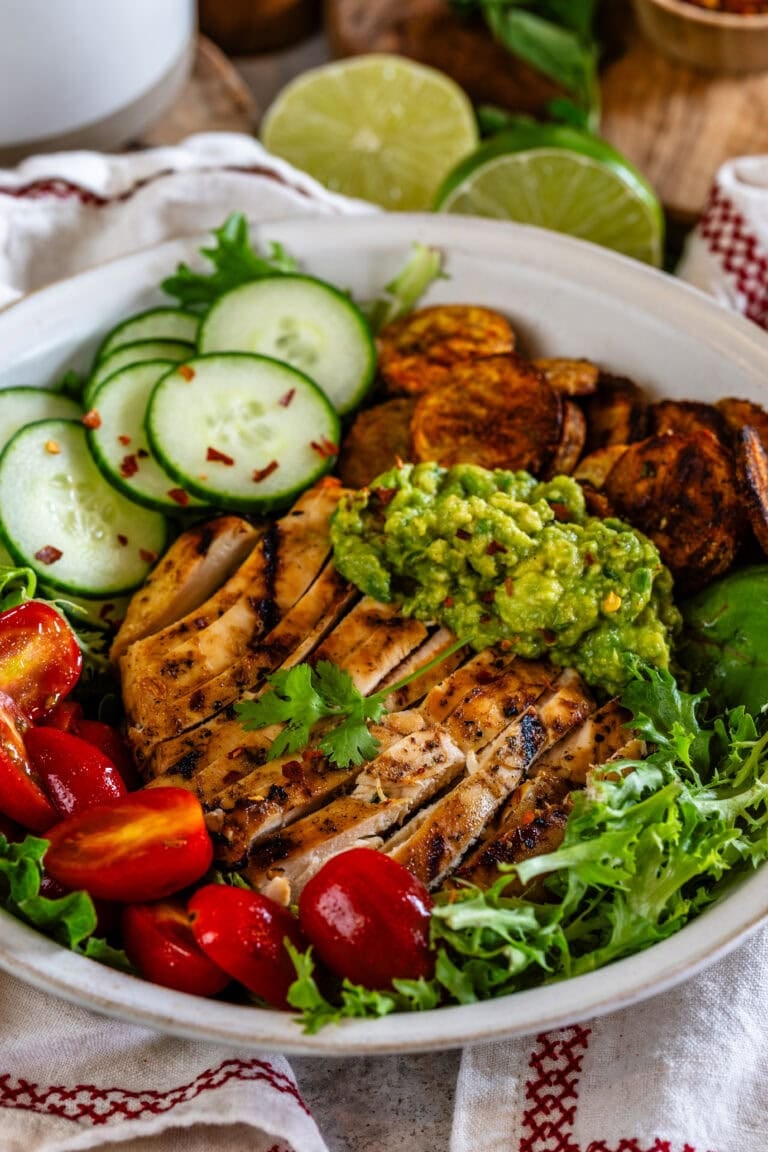



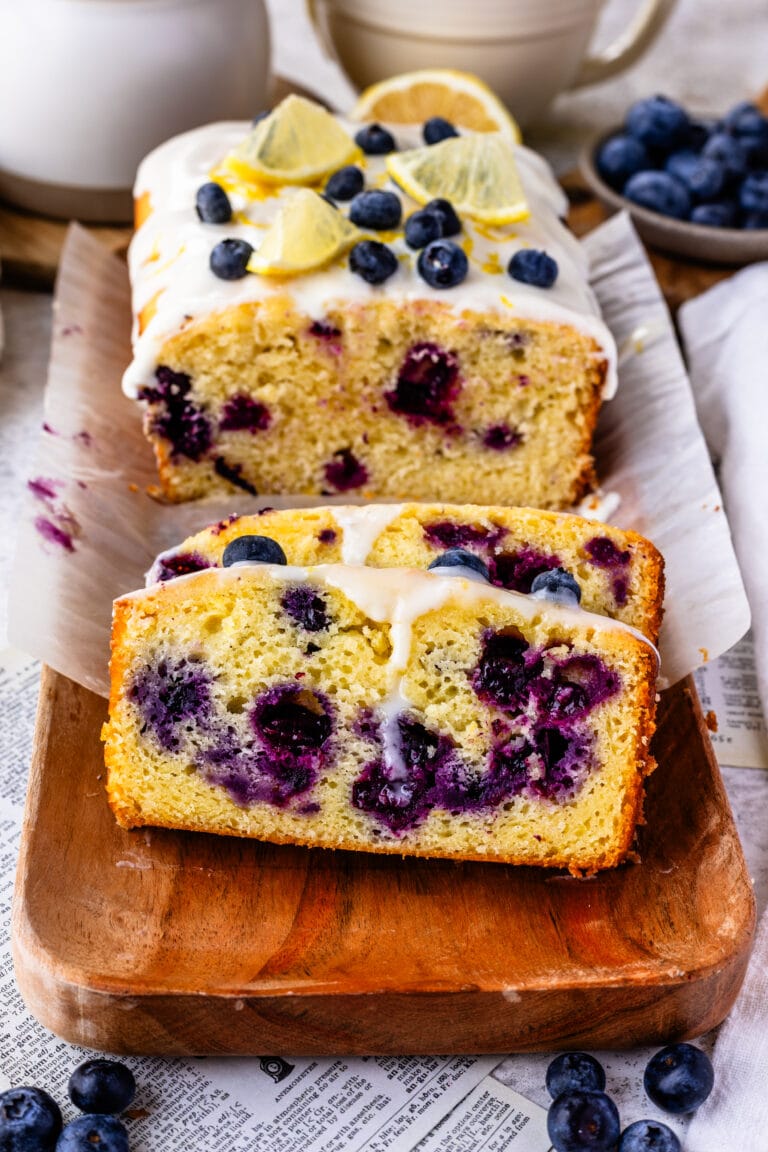
the best pao de queijo recipe I’ve ever made.